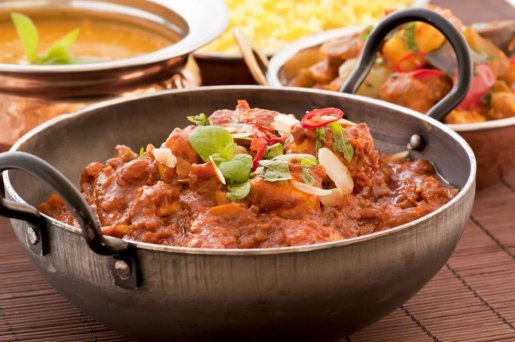The Delights of Indian Cuisine


As part of India Week, Sam, owner of the Meghna Grill restaurants in St. John's Wood and Hampstead, describes the history and techniques behind Indian cuisine:
Indian Food (or Khana as we know in Hindi/Urdu) consists of thousands of regional cuisines which date back centuries. The dishes are characterised by the extensive use of various Indian spices, such as Chilli Pepper, Black Mustard seeds, Cumin, Turmeric powder (which posseses antiseptic properties), Fenugreek, Ginger, Coriander, Garlic, Fennel seed and many more.
A wide variety of spices are grown across the Indian Subcontinent dependant on the varying climates. The abundance of locally grown spices heavily influences the cuisine from one region to another, reflecting the varied demographics of the ethnically-diverse subcontinent. Though most of the spices are native to the Subcontinent, others were imported from similar climates. For example, the chilli pepper was brought to India by the Portuguese and has since been cultivated locally for centuries.
Spices and Cooking Methods
Indian cuisine includes a wide assortment of dishes, prepared using a huge variety of spices and cooking techniques. One popular spice mix is called Garam Masala, which means Hot Spices Mix. It is a powder that typically includes five or more dried spices, and the mix is adapted by each chef to have their own unique recipe for Garam Masala. Home cooked food and commercially prepared restaurant cuisine can vary significantly along with the method of preparation.
Traditionally, spices are used either ground or whole, cooked or raw, and they may be added at different times during the cooking process to produce different results. In home cooked food spices are generally used as whole where as for commercial cooking the spices are ground to maintain the consistency and to avoid customers chewing them accidentally.
The majority of Indian restaurants in western countries offer variations of the North Indian cuisine. North Indian cuisine is a term used to refer to the cuisines of a vast number of states, including Jammu & Kashmir, Punjab, Haryana, Himachal Pradesh, Rajasthan, Uttarakhand, Uttar Pradesh, Bihar, as well as Central regions like Madhya Pradesh and Chhattisgarh. In the original traditional cuisines, the precise selection of spices for each dish is a matter of national or regional cultural tradition and to some extent, family preference. Such dishes are called by specific names that refer to their ingredients, spicing, and or cooking methods. For example, food cooked in Tandoor (charcoal fired clay oven) are traditionally known as Tandoori dishes.
Western Curries
Curry is a generic term primarily employed in Western culture to denote a wide variety of dishes originating in Indian, Pakistani, Bangladeshi, Sri Lankan, Thai or other Southeast Asian cuisines. Their common feature is the incorporation of more or less complex combinations of spices and herbs. Dishes called "curry" may contain meat, poultry, fish, or shellfish, either alone or in combination with vegetables. They may also be entirely vegetarian, especially among those for whom there are religious proscriptions against eating meat or seafood. Many people are still vegetarians due to widespread practice of vegetarianism in Indian society and vegetables dishes are prepared in accordance with their seasonal availability.
So-called ‘curry powder', denoting a commercially prepared mixture of spices, is largely a Western notion, dating to the 18th century. Such mixtures are commonly thought to have first been prepared by Indian merchants for sale to members of the British Colonial government.
Indian dishes may be either ‘wet' or ‘dry'. Wet curries contain significant amounts of sauce or gravy based on yoghurt, coconut milk, lentil, or stock. Dry curries are cooked with very little liquid which is allowed to evaporate, leaving the other ingredients coated with the spice mixture.
History and Evolution of Indian Cuisine
Today's Indian cuisine has been influenced especially by Central Asian & Afghan conquerors. This saw the emergence of the Mughlai cuisine which many people now associate with Indian cuisine. Over 5000 years' history of various groups and cultures interacting with the subcontinent, have lead to the diversity of flavours and regional cuisine found in modern-day India. Indian cuisine across India and overseas has been evolving as a result of the sub-continent's large-scale cultural interactions with Southeast Asia, the Caribbean, and the British, making it a unique and popular cuisine.









